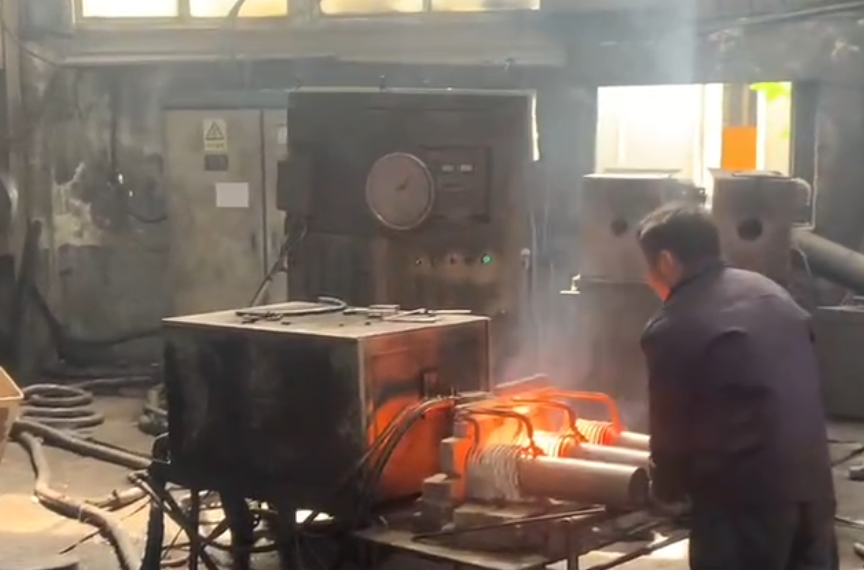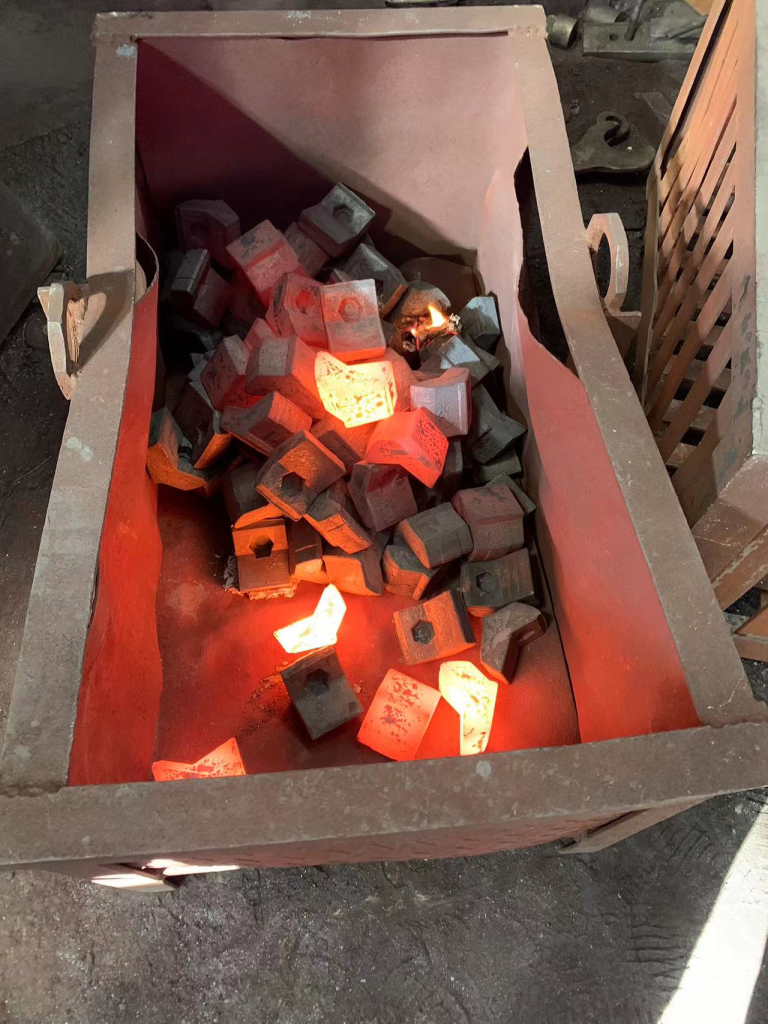Metal Forging
What is Metal Forging?
Metal forging is the process of using sustained pressure to shape a metal piece, usually for tool steel or iron. Extreme pressure may require rolling, pressing, or hammering the workpiece to shape it into the desired part. Common examples of forged parts include rolled rebar and beams.
Press forging is one of the most commonly used processes. Instead of hammering or rolling the material, a press is used to shape the part. To compress the material, the press generates a lot of force. Some presses may use 50,000 tons of pressure.
After the part is forged, the new shape has a denser structure, making it stronger and more resilient. There are many types of forging. Press forging methods are often classified based on the temperature at which the part is forged. The main categories include cold forging, warm forging, and hot forging.
Metal Forging Processes
1. Heating
Pre-forging metal starts with a block of metal called an “ingot,” which can vary in shape and size depending on the part or component being produced. These ingots are heated to a near-molten state, at which point the metal still holds its shape but can be easily changed by force.

2. Pre-forming
To form an ingot that can be pressed between closed dies, the heated ingot is trimmed and pressed with a press or hammer. Trimming is to increase the working cross-sectional area, and pressing is to improve the shape for finish forging.


3. Finish forging
To complete the shape, the pre-formed metal is pressed into an indentation between two dies; here, the metal takes on the general shape of the final product. Simple items may require only one press, but more complex items may require multiple presses at different pressures and even different dies to design the final product.
4. Cooling
By coordinating the cooling of the metal, the forger can improve the strength of the final product by deforming and optimizing the grain flow within the metal. A unique aspect of press die forging is “flash,” the excess metal that flows out of the die. The flash cools and hardens quickly, making it stronger than the metal in the die. This forces the metal in the die to completely fill any cavities.
5. Finishing
After the pressing process, the forged product needs to be surface treated such as trimming to improve the dimensional accuracy of the forged product. Surface treatment can enhance the corrosion resistance of the forged product and improve the appearance of the forged product.
Casting Service
Types of Metal Forging
Cold Forging
Cold forging is an efficient and economical method of forming metals, which can be used to manufacture large quantities of parts at low cost. The forging method varies by temperature: cold or hot. Forging is done by a machine with a hammer, or by a press used to shape, press and roll steel.This technique costs less than hot forging, as the final product requires little to no finishing. Although cold forging is called cold forging, it is done at or near room temperature.
The size of the machine that accomplishes cold forging varies with the hardness of the material and the weight of the final part to be processed.
Free Forging
Free forging is also called open die forging or iron forging. The forming feature of free forging is that the blank is gradually deformed on the flat anvil or between the tools. Since the tool is in partial contact with the blank, the mesh required to produce forgings of the same size is much smaller than that of the die forging bar, so free forging is suitable for forging large forgings.
Hot Forging
Hot forging involves heating the metal above its recrystallization temperature. This reduces the flow stresses and energy required to form the metal, effectively increasing the production rate (or strain rate). Hot forging helps make the metal easier to form and less prone to fracture.
Iron and its alloys are almost always hot forged for two main reasons: #1) Hard materials (such as steel and iron) become more difficult to work if work hardening is increased; #2) Hot forging metals (such as steel) and then heat treating processes is a more economical option because metals (such as steel) can be strengthened by other processes (not necessarily just cold working processes).
Warm Forging
Warm forging is performed while the workpiece is heated to a certain temperature, usually above the work-hardening temperature, but below the scale-forming temperature. The process fills the gap between the tighter tolerance but sometimes more expensive cold forging process and the slightly less precise hot forging process. It is used to produce alloy steel parts with tight tolerances that are not possible or possible with cold forging. It is also used to produce parts very close to net shape that were previously made by hot forging but with a large finishing allowance. Shafts, gears and automotive front-wheel drive tulips are currently being warm forged.




Industries We Serve
Nbcastings is proud to provide high quality sand casting services to businesses across a wide range of industries. We understand the importance of reliable castings that will not exhibit any defects during use.
Nbcastings produces near net shape, high quality, durable investment castings for pumps and valves.
Agricultural applications often require looser tolerances, and investment castings have been a major market for this industry for decades.
Our role in automotive precision casting is primarily focused on the aftermarket, or replacement parts that are not produced by the original manufacturer (OEM).
Nbcastings has been producing quality investment castings for companies in the medical industry.
Investment castings used in the oil and gas industry require the highest quality, durability, and corrosion resistance.
Nbcastings has the capabilities and technical expertise to meet the needs of the food processing industry.
Have Questions Left Unanswered?
Nbcastings has many years of expertise in the casting field and can support your project from start to finish. Our team of experts can help you with everything from selecting the right alloy to ensuring the most efficient casting process to meet your specific needs.
